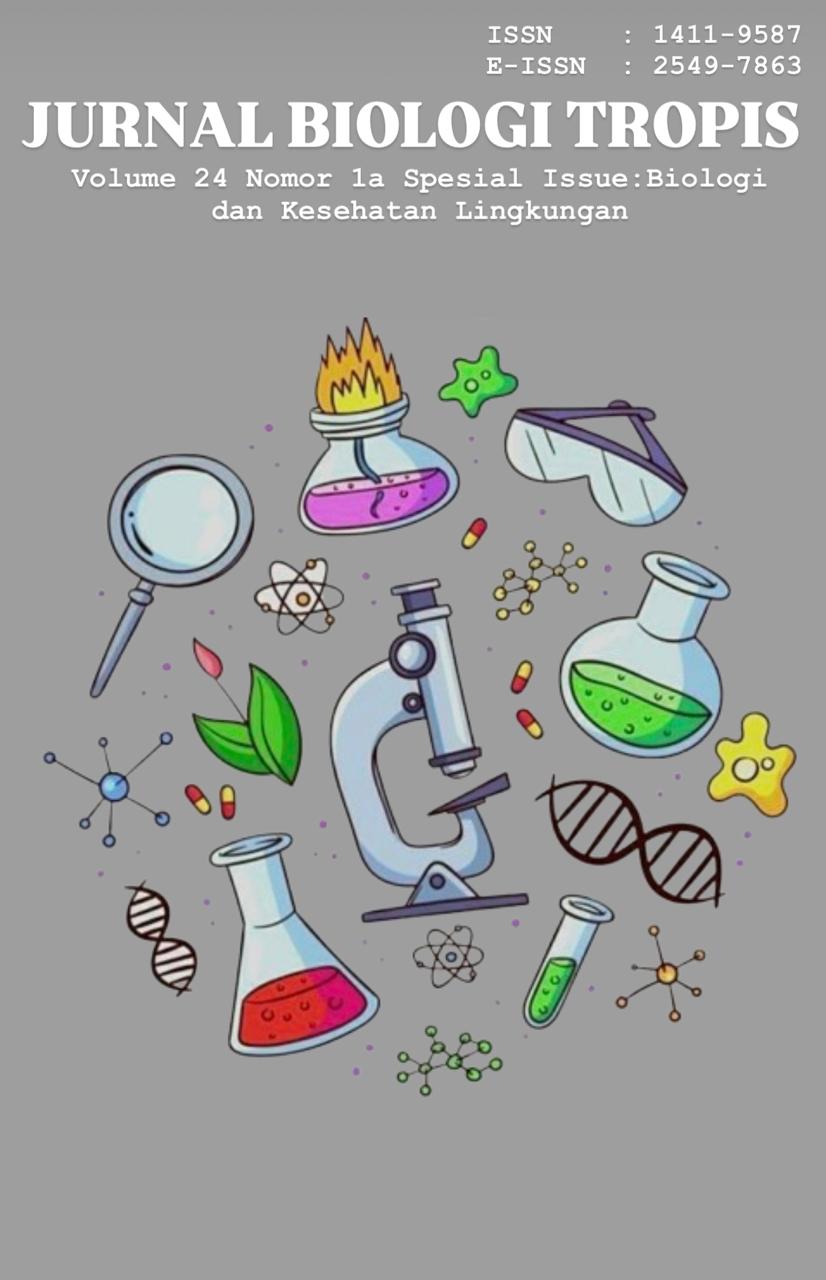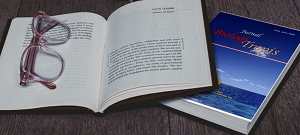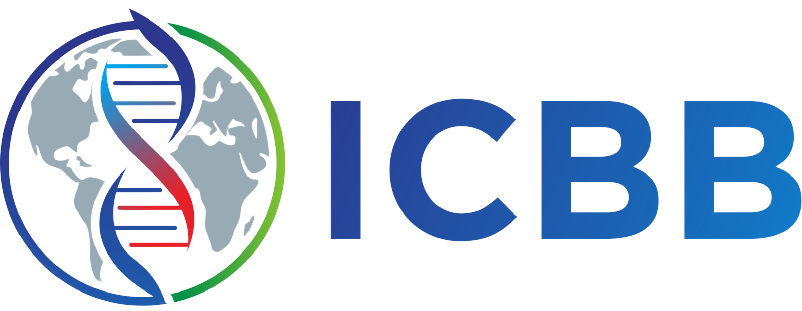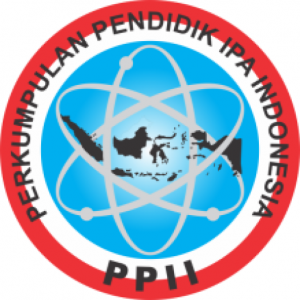Effectiveness of Acetobacter xylinum Bacterial Cellulose Produced from Sugarcane Waste in Accelerating Burn Wound Healing in Animal Test Mice (Mus musculus)
Authors
Nabila Zaky Aqilah , Hasbiyan RosyadiDOI:
10.29303/jbt.v24i1b.8058Published:
2024-12-28Issue:
Vol. 24 No. 1b (2024): Special IssueKeywords:
Acetobacter xylinum, burns, cellulose.Articles
Downloads
How to Cite
Downloads
Metrics
Abstract
Burns are often treated inappropriately, such as the use of inappropriate materials, such as butter or toothpaste, thus slowing healing. This study aims to determine the effectiveness of cellulose of Acetobacter xylinum bacteria cultured on sugarcane waste as a wound plaster material for burn wound healing.The research was conducted using a literature study method, analyzing literature related to the cellulose properties of Acetobacter xylinum bacteria, the effectiveness of its use in medical applications, and comparing the results of culture on sugarcane waste media with other sources.The results showed that the cellulose-based wound plaster of Acetobacter xylinum bacteria produced from sugarcane waste has biocompatibility, permeability, and resistance to bacteria that are ideal for accelerating burn wound healing. It can be concluded that wound plasters with Acetobacter xylinum bacterial cellulose from sugarcane waste are an effective alternative for medical applications, especially in burn wound treatment.
References
Akbar, M.A dan Agustina,F. (2023). Gambaran Perilaku Masyarakat terhadap Penanganan Luka Bakar di Rumah. Jurnal kesehatan komunitas. 9(1):21-26. https://doi.org/10.25311/keskom.Vol9.Iss1.1153
Anjarwati, M. S., Meidinariasty, A., & Yerizam, M. (2023). Sintesis Selulosa Asetat dari Ampas Tebu sebagai Bahan Baku Biodegradable Foam. Jurnal Serambi Engineering, 8(4), 1-8. https://doi.org/10.32672/jse.v8i4.5893
Bhernama, B. G., Saputra, S. A., & Amalia, J. 2023. Karakterisasi Selulosa dan Selulosa Asetat dari Limbah Cangkang Biji Pala (Myristica fragransi) Aceh Selatan. Jurnal Riset Kimia, 14(1), 81-93. https://doi.org/10.25077/jrk.v14i1.579
Boateng JS, Matthews KH, Stevens HNE, Eccleston GM. (2008). Wound healing dressings and drug delivery dystems: A review. Journal of Pharmaceutical Sciences 97(8). 2892-2923. https://doi.org/10.1002/jps.2121
Cannon, R. E. (2000). Acetobacter xylinum—Biotechnology and Food Technology. In Electrotransformation of Bacteria (pp. 104-107). Berlin, Heidelberg: Springer Berlin Heidelberg. https://doi.org/10.1007/978-3-662-04305-9_12
Carville, K. (2007). Wound Care Manual. 3rd Edition. Western Australia: Silver Chain Foundation.
Chesterman, J., Zhang, Z., Ortiz, O., Goyal, R., Kohn, J. (2020). Chapter 18 - Biodegradable polymers,Academic Press, Pages 317-342.
Christopher, K., Arakawa, C.A., and DeForest. (2017). Chapter 19 - Polymer Design and Development, Academic Press, Pages 295-314.
de Amorim, J. D. P., da Silva Junior, C. J. G., de Medeiros, A. D. L. M., do Nascimento, H. A., Sarubbo, M., de Medeiros, T. P. M., ... & Sarubbo, L. A. (2022). Bacterial cellulose as a versatile biomaterial for wound dressing application. Molecules, 27(17), 5580. https://doi.org/10.3390/molecules27175580
Hiranobe, C. T., Gomes, A. S., Paiva, F. F., Tolosa, G. R., Paim, L. L., Dognani, G., ... & Cabrera, F. C. (2024). Sugarcane Bagasse: Challenges and Opportunities for Waste Recycling. Clean Technologies, 6(2), 662-699. https://doi.org/10.3390/cleantechnol6020035
Liau, S. S., Hidayat, M., & Sulistyo, H. (2023, July). Potensi Selulosa Bakteri Sebagai Pembalut Luka Ideal dan Penghantar Obat (Drug Delivery). In Seminar Nasional Teknik Kimia" Kejuangan" (pp. 2-1).
Malone, S., Yegappan, R., Kijas, A. W., Gemmell, A., Rowan, A. E., Rajah, D., ... & Amiralian, N. (2024). The Potential of Sugarcane Waste-Derived Cellulose Fibres as Haemostatic Agents. Polymers, 16(12), 1654. https://doi.org/10.3390/polym16121654
Mamun, A. A., Shao, C., Geng, P., Wang, S., & Xiao, J. (2024). Recent advances in molecular mechanisms of skin wound healing and its treatments. Frontiers in Immunology, 15, 1395479. https://doi.org/10.3389/fimmu.2024.1395479
Ningsih, L., & Zakiah, Z. (2021). Fermentasi Nira Kelapa (Cocos nucifera L.) Dengan Penambahan Ekstrak Kecambah Kacang Hijau (Phaseolus radiate L.) Pada Pembuatan Nata De Nira. Bioma: Jurnal Biologi Makassar, 6(1), 57-65. https://doi.org/10.20956/bioma.v6i1.12106
Palaniappan V, Karthikeyan K. Turmeric: The Yellow Allergen. Indian Dermatol Online J. 2022 Oct 21;14(4):459-464. DOI: 10.4103/idoj.idoj_340_22
Pine, A. T. D., & Base, N. H. (2021). Produksi dan Karakterisasi Serbuk Selulosa dari Batang Pisang (Musa paradisiaca L.). Jurnal Kesehatan Yamasi Makassar, 5(2), 115-120. https://doi.org/10.59060
Roska, T. P., Sahati, S., Fitrah, A. D., Juniarti, N., & Djide, N. (2018). Efek sinergitas ekstrak kulit jeruk (Citrus Sinensis L) pada patch bioselulosa dalam meningkatkan penyembuhan luka bakar. Jurnal Farmasi Galenika (Galenika Journal of Pharmacy)(e-Journal), 4(2), 87-92. https://doi.org/10.22487/j24428744.2018.v4.i2.10472
Saad, A. A., Ahmed, H. S., Megally, I. A. N., Ahmed, M., Ibraheem, M. T., Farouk, S. M., ... & Khalaf, E. S. A. (2022, September). Optimization and characterization of cellulose extracted from sugarcane bagasse. In The International Undergraduate Research Conference (Vol. 6, No. 6, pp. 1-9). The Military Technical College. DOI: 10.21608/iugrc.2022.302662
Saktiono, S. T. P., & Dina, E. (2021). Pemanfaatan Limbah Cair dan Padat Pabrik Gula Sebagai Penambah Unsur Hara pada Tanah Pasiran di Pembibitan Tebu (Saccharum officinarum L.). Biofarm Jurnal Ilmiah Pertanian, 17(1), 40-47.
Saputra, D. (2023). Tinjauan Komprehensif tentang Luka Bakar: Klasifikasi, Komplikasi dan Penanganan. Scientific Journal, 2(5), 197-208. https://doi.org/10.56260/sciena.v2i5.113
Schaefer, T. J., & Tannan, S. C. (2023). Thermal burns. In StatPearls [Internet]. StatPearls Publishing. https://doi.org/10.1007/978-3-031-45453-0_29
Sriwiyati, L., & Kristanto, B. (2020). Karakteristik Luka Dan Penggunaan Balutan Luka Modern. Adi Husada Nursing Journal, 6(1), 8-18.
Sriwong, C., Boonrungsiman, S., & Sukyai, P. (2023). Sugarcane bagasse cellulose-based scaffolds incorporated hydroxyapatite for promoting proliferation, adhesion and differentiation of osteoblasts. Industrial Crops and Products, 192, 115979. https://doi.org/10.1016/j.indcrop.2022.115979
Sulianai, N. W., & Oktavia, D. (2023). Tingkat Pengetahuan Masyarakat Kebon Kosong Terhadap Penanganan Kedaruratan Luka Bakar. Jurnal Akademi Keperawatan Husada Karya Jaya, 9(1), 63-69. DOI: http://dx.doi.org/10.59374/jakhkj.v9i1.261
Tensiska, T., Nurhadi, B., & Isfron, A. F. (2012). Kestabilan warna kurkumin terenkapsulasi dari kunyit (Curcuma domestica val.) dalam minuman ringan dan jelly pada berbagai kondisi penyimpanan. Bionatura, 14(3), 218238.
Thongsomboon, W., Baimark, Y., & Srihanam, P. (2023). Valorization of cellulose-based materials from agricultural waste: Comparison between sugarcane bagasse and rice straw. Polymers, 15(15), 3190. https://doi.org/10.3390/polym15153190
Zhong, C. (2020). Industrial-scale production and applications of bacterial cellulose. Frontiers in Bioengineering and Biotechnology, 8, 605374. https://doi.org/10.3389/fbioe.2020.605374
License
Copyright (c) 2024 Nabila Zaky Aqilah, Hasbiyan Rosyadi

This work is licensed under a Creative Commons Attribution 4.0 International License.

Jurnal Biologi Tropis is licensed under a Creative Commons Attribution 4.0 International License.
The copyright of the received article shall be assigned to the author as the owner of the paper. The intended copyright includes the right to publish the article in various forms (including reprints). The journal maintains the publishing rights to the published articles.
Authors are permitted to disseminate published articles by sharing the link/DOI of the article at the journal. Authors are allowed to use their articles for any legal purposes deemed necessary without written permission from the journal with an acknowledgment of initial publication to this journal.


























